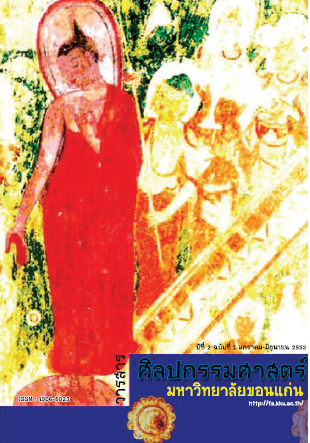วงพิณพาทย์ครูคูนสี ไชยะมงคล แขวงจำปาสักสาธารณรัฐประชาธิปไตยประชาชนลาว
Main Article Content
Abstract
This research aims to study the Phinphat Ensemble of Master Kunsee Chaiyamongkol of Champasak, in the Laos People's Democratic Republic, the bandûs past, and its growth within the Champasak court and neighboring countries. This researcher used qualitative research methodology. The study focused on Master Kunsee's biography, the transmission of knowledge and skills, the background and history of the band, and other related information regarding the Champasak Phinphat Ensemble. The results of the research were as follows:
In order for this Laotian band to survive, it is crucial that the transmission of knowledge be systematized. After the change of government in 2518 B.C., Laos's classical music ensembles, which represented one form of art influenced by the monarchy, needed to modify its form to reflect the governmental structure to continue to exist. That is, the musical patterns, which formerly followed the norms of the court, was altered to follow the lay people's ideology and governmental influences. To conclude, the Phinphat Ensemble of Master Kunsee Chaiyamongkol of Champasak is a band that has survived to the present day combining western musical instruments with original music and going through several transformations in order to retain its existence and its uniqueness.Article Details
Content and information in articles published in the Journal of Fine and Applied Arts of Khon Kaen University is regarded as the opinion and sole responsibility of the author(s) directly; therefore, editors are not obliged to agree to or share any responsibility with regard to the content and information that appears within these articles.
All articles, information, content, image, etc. that have been published in the Journal of Fine and Applied Arts of Khon Kaen University is the copyright of the Journal of Fine and Appllied Arts of Khon Kaen University. Any person or organization who wishes to distribute all or parts of the articles for further dissemination or other usage must first receive permission from the Journal of Fine and Applied Arts of Khon Kaen University before proceeding to do so.


